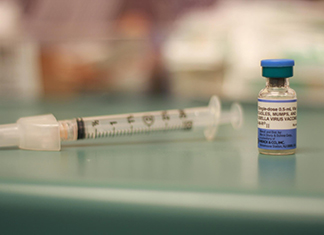
By Aaron Allen, The Seattle Medium
They say the light is at the end of tunnel as the world prepares to administer vaccines in the hopes it will curb the damage done by COVID 19.
Never before has a prospective vaccine for a pathogen entered a final-stage clinical trial as rapidly as the candidates for the Coronavirus.
So, how are COVID vaccines being produced faster?
COVID -19 is a form of the Coronavirus. There are seven different types of Coronvirus. Two alpha coronaviruses, two beta coronaviruses, MERS-CoV, SARS-CoV and now SARS-CoV-2 which is the novel coronavirus that causes COVID-19.
It has been more than a decade since the viral disease known as Severe Acute Respiratory Syndrome (SARS) attacked China killing 770 people. In 2016, Dr. Peter Hotez, co-director of the Texas Children’s Hospital’s for Vaccine Development in Houston, searched desperately for funding to test vaccines for SARS to no avail.
“We tried like heck to see if we could get investors or grants to move this into the clinic,” says Hotez. “But we just couldn’t generate much interest.”
Fast forward to today and the impact of COVID-19 is what has motivated the speed of production for a vaccine. Under normal circumstances, it typically takes years for a vaccine to reach the general population. However, the death tolls from COVID-19 opened the flood gates of funding and inspired researchers around the globe to be the first to come up with a vaccine(s) effective enough to halt the spread and the 6 months it took to bring the vaccines for COVID-19 in to fruition dwarfs all other attempts.
Several different COVID vaccines are in testing right now. Each of them goes through more than one clinical trial; first with a small group of volunteers, then a couple hundred, then thousands. Because of the speed of the testing of this vaccine some people worry that the process may have been compromised, but health officials with the CDC and the FDA claim that the testing of the vaccines were performed according to their guidelines and subsequent approval.
Vaccines are developed in three clinical development stages. Phase 1 usually begins with animal testing, and then small groups of people receive the trial vaccine. In Phase II, the clinical study is expanded and vaccines are administered to people who possess certain characteristics such as age, physical health, race, etc. During Phase III the vaccine is administered to the larger population and tested for efficacy and safety.
“There is a process to testing,” says Dr. William Washington, a Seattle-based African American emergency medicine practitioner. “You are supposed to begin testing with animals and then they undergo smaller populations of people and so forth, so when you’re expediting a vaccine and the potential to skip those types of steps this can be concerning.”
Not all COVID vaccine versions that go through clinical trials will make it to the final stages of testing and approval. According to the FDA, their Center for Biologics Evaluation and Research (CBER) ensures that FDA’s rigorous scientific and regulatory processes are followed by those who pursue the development of vaccines.
Public Health Seattle King County (PHSKC), like many other health jurisdictions across the country, are preparing their distribution plans now that Pfizer’s vaccine has been approved by the FDA.
According to the PHSKC, “the Federal Government and local partners within Washington plan for the distribution of a COVID-19 as the vaccine has now become approved by the FDA . We turned in our interim vaccine distribution plan to the CDC on October 16. We’ve watched the FDA’s approval process closely to make sure it is thorough and transparent.”
While there is not a mandate that forces people to take any of the vaccines currently available, the decision of whether or not to take a vaccine, when available to the general public, is up to the individual. Dr. Washington advises everyone to talk to and learn as much as they can about the vaccines, their process for testing and approval, and to talk to their primary caregiver before making their final decision.
“I always tell my community and patients to be cautious,” says Dr. Washington. “You have the right to be cautious. Do your own research independently and then sit down with your physician already with a list of questions and debate your position with your doctor and really pay attention [in order] to make a sound decision.”















